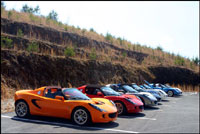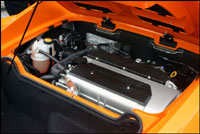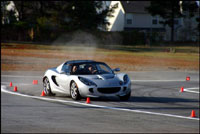Future Models - BMW 2007 1 Series
BMW gives 1 Series a subtle makeover

More space: BMW has worked to improve interior packaging.
No three-door model coming, but revised 1 Series hatch improves the breed

"Obviously we will eventually get direct injection but Europe is pushing for it more," he said.
BMW also released images of the 1 Series three-door but Mr Andreevski has confirmed Australia will not get this car as the expected volumes would be too low.
BMW is working on expanding the 1 Series family with a convertible and coupe version, which are likely to be sold here, possibly as early as next year.
With refreshed exterior and interior styling, increases in power and reductions in fuel consumption and a new-generation four-cylinder diesel engine the 1 Series five-door should maintain its price-point when it goes on sale.
The upgraded 1 Series also gains higher-quality materials and with additional storage options.
Visually there are new bumpers, with a cleaner air intake at the front and revised tail-lights.
 Below left: Three-door 1 Series will not be seen on Australian roads.
Below left: Three-door 1 Series will not be seen on Australian roads.A new 2.0-litre four-cylinder turbo-diesel leads a host of performance improvements and fuel consumption reductions.
The second-generation common-rail diesel engine with aluminum crankcase in the new 120d develops 125kW, an increase of 10kW over the former engine.
Peak torque is up by 24Nm to 340Nm and the new BMW 120d accelerates from zero to 100 km/h in just 7.8 seconds, against the previous model’s 8.5 seconds.
Despite the performance gains, combined fuel consumption for the new 120d is down to 6.1L/100km. It was previously 6.6L/100km.
The four-cylinder Valvetronic engines in the 118i and 120i models produce an additional 5kW, taking their respective maximum outputs to 100kW and 115kW .
BMW 120i models equipped with the standard six-speed manual gearbox also benefit from a quicker acceleration time of 7.6 seconds, compared to the previous model.
The optional six-speed automatic transmission (standard on the 120d) comes with new converter technology featuring an integrated torsion damper reducing energy losses and ensuring even shorter reaction and gearshift times.
Modest fuel economy gains have also been made in all automatic models.
The 118i and 130i Sport automatic models both reduce fuel consumption by 0.2 litres to achieve 7.6L/100km and 9.2L/100km respectively on the combined cycle.
The corresponding figure for the 120i automatic is a fuel consumption reduction of 0.3 litres to 7.6L/100km, while the 120d has improved by 0.5 litres to 6.1L/100km.
Exterior paint finishes include new colours in Montego Blue and Patagonia Green and newly styled alloy wheels will be available for the 118i, 120i and 120d models.
A daytime running lights function, provided by corona rings in the double round headlights, are incorporated in the bi-xenon headlight package, which is also available as an option.
Unique to its segment, the 1 Series can be specified with adaptive headlights, which provide for optimum illumination on winding roads.
The brake lights now also operate at two levels of brightness depending on brake pressure.
Since its launch in October 2004 the 1 Series has proved a popular choice with buyers keen to enter the BMW club with more than 4600 sold locally. Buyers generally opt for the upper-spec cars with only 70 1 Series being the entry $34,900 116i.
More than 200,000 1 Series’ have been sold worldwide.























